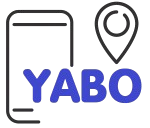CASE STUDY – THE ATTIC ADDICTION- an online thrift store business

COMPANY PROFILE
The Attic Addiction, an innovative online thrift store, emerged from the founder’s passion for sustainable fashion and a commitment to providing a curated selection of unique second-hand items. The owner identified a gap in the market for a thoughtfully curated thrift store that combines affordability with a diverse range of stylish finds, inspiring the establishment of the Attic Addiction.
The customer focus of the Attic Addiction is guided by a dedication to eco-conscious consumers seeking budget -friendly, pre-loved fashion. The owners keen understanding of the growing demand for sustainable choices in fashion influenced the stores offerings, ensuring a blend of quality and affordability for the target audience. Choosing an online location was a strategic decision to reach a wide audience and facilitate the convenient exploration for thrifted treasures. This digital platform allows The Attic Addiction to showcase its unique inventory, engage with environmentally conscious shoppers, and offer a seamless online shopping experience.
Running the business successfully requires a diligent team for tasks such as inventory management. Quality control, customer service, and online marketing. Efficient collaboration with suppliers and a commitment to maintaining the condition of pre-loved items are vital components of the operation.
The Attic Addiction employs various marketing techniques, including social media promotions, email campaigns, and collaborations with sustainable influencers.
Highlighting the stories behind each thrifted item, periodic sales events, and a user-friendly website contribute to the stores success. The effectiveness of these strategies is monitored through sales data and customer feedback, ensuring The Attic Addiction remains a go-to destination for eco-conscious shoppers in the thriving realm of online thrift stores.
Step-by-Step Guide to Running Your Online Thrift Store Business
Step 1: Market Research
Thoroughly research the online thrift store market, identifying your target audience, popular items, and competitors. Use this knowledge to guide your strategy for an online thrift store shop. Explore online thrift store directories like ThriftStoreListings.com to identify potential competitors and understand their offerings. Platforms like YouTube and TikTok are rich sources of thrift haul videos. Analyze these videos to spot popular thrifted items and gain insights into trends.
Step 2: Legal Considerations
Ensure the proper registration of your online thrift store, complying with local business regulations, and addressing any specific requirements for selling second-hand items. Research legal requirements for online thrift stores in your jurisdiction. Utilize government websites and legal databases to understand registration, licensing, and tax obligations.
Step 3: Platform Selection
Choose an e-commerce platform, customizing it to reflect your unique brand image. Design the layout to enhance the online shopping experience for your customers. Also, this will ensure that you can capture well the shopping experience of your customers for sharing on social media. Choose a suitable e-commerce platform like Jiji or Masoko are popular for online thrift stores. Evaluate features, fees, and user reviews for the best fit.
Step 4: Supply Chain and Inventory
Establish a reliable supply chain for thrifted items, partnering with thrift shops and individuals. Implement an efficient inventory management system to keep track of your curated collection. Connect with thrift shops, local sellers, or online platforms like ThredUp or Poshmark for sourcing inventory. Discuss terms, negotiate prices, and establish reliable supplier relationships.
Step 5: Quality Assurance
Implement a rigorous inspection process to ensure the quality of your thrifted items. Provide accurate descriptions and high-quality images to build trust with your customers. Integrate secure payment gateways like PayPal or Stripe to facilitate secure transactions. Ensure a seamless checkout experience.
Step 6: Shopping and Logistics
Streamline your shipping process, including determined costs, delivery times, and reliable shipping partners. Make clear communication of shipping policies a priority. Implement a customer service platform such as Zendesk or Freshdesk to manage inquiries, feedback, and returns efficiently.
Step 7: Online Presence
Build a strong online presence through social media, showcasing unique thrift finds, engaging with your followers, and using visual platforms like Instagram to market your business effectively. Use user-friendly platforms like Jiji or WordPress to launch the store. Test the websites functionality and user experience before the official launch.
Step 8: Marketing and Branding
Focus on developing your business brand identity. Implement marketing strategies, including social media campaigns, influencer collaborations, and email newsletters, to promote your store. Design a distinctive logo and visual identity using graphic design tools like Canva. Leverage Instagram and Pinterest for visual marketing. Create mood boards showcasing thrifted finds and engage with the thrift community through these platforms.
Estimated Start-up Costs
Legal Considerations:
Cost for business registration, licenses, and permits: varies depending on jurisdiction and business structure.
Platform Selection:
Cost for choosing and customizing an e-commerce platform: Kshs. 5,000 to Kshs. 15,000.
Supply Chain and Inventory:
The cost for acquiring initial inventory from thrift shops and individuals: varies depending on quantity and quality of items, estimated at Kshs. 20,000 to Kshs. 50,000.
Quality Assurance:
Cost for implementing a rigorous inspection process and providing accurate descriptions and images: minimal, but may include costs for equipment or software for photo editing and quality assessment.
Shopping and Logistics:
Cost for setting up shipping processes and partnering with shipping companies: minimal, but may include costs for packaging materials and shipping fees.
Online Presence:
The cost of building a website and establishing social media accounts: varies depending on platform and customization needs, estimated at Kshs. 5,000 to Kshs. 20,000.
Marketing and Branding:
Cost for marketing strategies, including social media campaigns, influencer collaborations, and email newsletters: Kshs. 10,000 to Kshs. 30,000.
Totaling these estimates, the startup costs for an online thrift store business like The Attic Addiction in Kenya could range from approximately Kshs. 40,000 to Kshs. 130,000. These are rough estimates and actual costs may vary based on individual business plans, location, and other factors.

